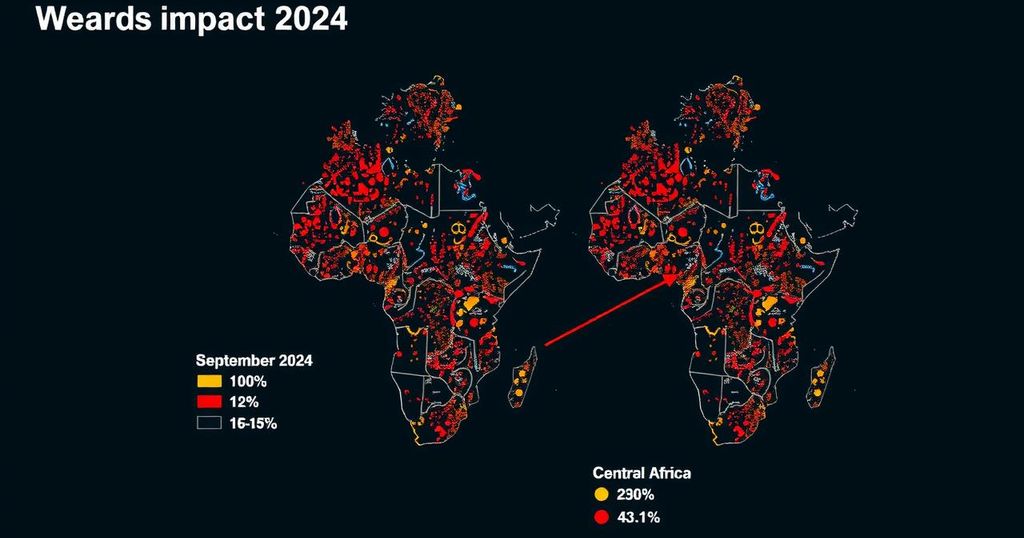Flooding Crisis in West and Central Africa: A Call for Immediate Action
West and Central Africa: Overview of the Flooding Situation as of September 6, 2024 – Democratic Republic of the Congo
In 2024, extensive torrential rains have resulted in severe flooding across West and Central Africa, displacing over 2.3 million individuals. The most significantly impacted nations include Chad, with approximately 1 million individuals affected, Nigeria with around 600,000, and Niger with 300,000 individuals impacted. Furthermore, the Democratic Republic of the Congo, Cameroon, and Mali collectively account for an additional 424,500 affected individuals. Comparatively, the present figures reflect a substantial increase from the previous year’s total of 692,000 individuals affected, marking a dramatic threefold rise to 2.3 million this year.
As of August 30, 2024, the catastrophic flooding has led to the internal displacement of over 290,000 individuals across seven countries, notably including Nigeria, Liberia, the Central African Republic, the Democratic Republic of the Congo, Chad, Guinea, and Côte d’Ivoire. The ramifications of the flooding extend beyond displacement, severely disrupting livelihoods and access to fundamental social services. Reports indicate that over 233,000 dwellings have either been destroyed or damaged across 11 countries, a figure that has nearly quadrupled since July. Additionally, the repercussions of the flooding have compromised the functionality of 61 educational institutions and 13 health facilities in the region.
During the last two weeks of August alone, approximately 1,590,000 individuals were affected across the region. Heavy rains during this two-week span impacted 12 countries, with seven experiencing population displacement and 11 witnessing destruction or damage to housing.
Between August 15 and August 30, it was reported that 465 individuals lost their lives, whilst 1,747 others sustained injuries, contributing to a cumulative toll of 537 fatalities and 2,446 injuries throughout 2024. This period also saw an additional 354,000 hectares of agricultural land adversely affected, culminating in a total of 380,000 hectares rendered unsuitable for agricultural and livestock production. In a further distressing statistic, it is estimated that approximately 32,200 head of cattle have been lost to the floods within this timeframe, bringing the total livestock casualties in 2024 to 36,400.
The current situation is dire, with escalating numbers of people affected, along with catastrophic impacts on agricultural production and, thus, the food and nutritional security of particularly vulnerable populations in West and Central Africa. This alarming assessment surpasses similar scenarios from previous years, exacerbating the precarious condition of affected populations, unless immediate and effective interventions are implemented. Multiple alerts have been issued to highlight the urgent need to address the exigencies of the impacted communities.
For further insights regarding the ongoing humanitarian response, please refer to the UN Office for the Coordination of Humanitarian Affairs (OCHA) at https://www.unocha.org/.








Post Comment